Wallace Broecker, Prophet of Climate Change
Wallace Broecker, a geochemist who initiated key research into the history of earth’s climate and humans’ influence upon it, died Feb. 18 in New York. He was 87.
Wallace Broecker, a geochemist who initiated key research into the history of the earth’s climate and humans’ influence upon it, died Feb. 18 in New York. He was 87. The cause was congestive heart failure, said his family. His death was confirmed by Columbia University’s Lamont-Doherty Earth Observatory, where he spent a career that spanned nearly 67 years.
One of the first scientists to predict an imminent rise in the earth’s temperature due to human output of carbon dioxide, Broecker was credited with introducing the phrase “global warming” into the scientific lexicon in the 1970s. Much of his work focused on the oceans. Among other things, his studies of marine chemistry helped lay out the map of global ocean circulation, and its powerful effects on climate. His studies also helped lay the basis for many other scientists’ work in a variety of fields. Not content to just do research, he made friends with and extended his influence to powerful figures in government and business.
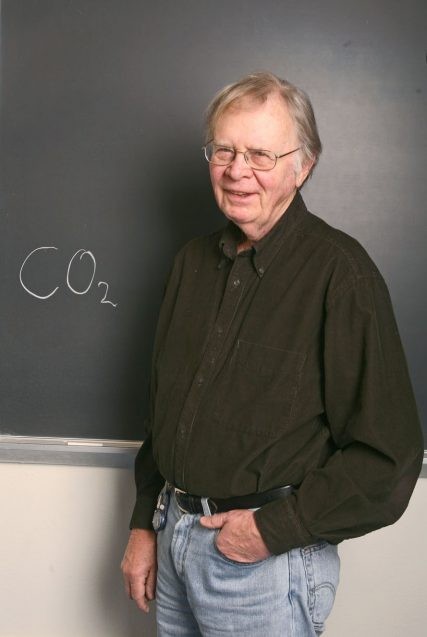
Broecker—universally known as Wally—at first made an unlikely scientist. Born Nov. 29, 1931, the second of five children, he grew up in the Chicago suburb of Oak Park, Illinois. His father, also named Wallace, ran a gas station. His mother was the former Edith Smith. Both parents were evangelical Christians who rejected modern geologic theory for the literal Biblical interpretation that the earth is just a few thousand years old. They also forbade drinking, dancing and movies. Broecker attended Illinois’ fundamentalist Christian Wheaton College, where daily chapel attendance was required; it was at the time the recent alma mater of preacher Billy Graham. While still a student, he married the former Grace Carder, and spoke of becoming an insurance actuary.
While at Wheaton, Broecker decided one day that Christianity was not for him, and abandoned it “cold turkey,” in his own words. He got sidetracked on the career idea as well after an older Wheaton student helped him arrange a summer 1952 lab internship at what was then called Lamont Geological Observatory, in Palisades, N.Y. The student was Paul Gast, who later went on to head NASA’s moon-rock program. At Lamont, Broecker worked with J. Laurence Kulp, a geochemist doing pioneering work on radiocarbon dating, a then revolutionary new method that allowed researchers to tell the ages of materials as far back as 40,000 years.
By his own account, Broecker had fun tinkering with the lab equipment, and he was excited by the newly wide-open chance to make discoveries about nature using carbon dating. He transferred to Columbia that fall and kept working with Kulp. Some other students made fun of his background, calling him a “theo-chemist.” And, while other students were sent on exotic ocean research cruises, he was left off the list for his first eight years. Nevertheless, he earned a PhD. in geology in 1958 and stayed around, gradually rising to the first rank of prominence. In a 2016 memoir he said that Lamont became “my Garden of Eden.”
“My great joy in life comes in figuring something out,” he told The New York Times in 1998. “I figure something out about every six months or so, and I write about it and encourage research on it, and that’s the joy of my life.”
One of Broecker’s first achievements was a series of papers demolishing the stock idea that it took tens of thousands of years for water to circulate between shallow and deep regions of the world’s oceans. His analyses of carbon isotopes collected by Lamont ships from around the world showed that water could make the switch in just centuries—a discovery that suggested the oceans are far more dynamic than previously had been thought. This in turn implied that the oceans could potentially affect the composition of the atmosphere, or vice-versa.
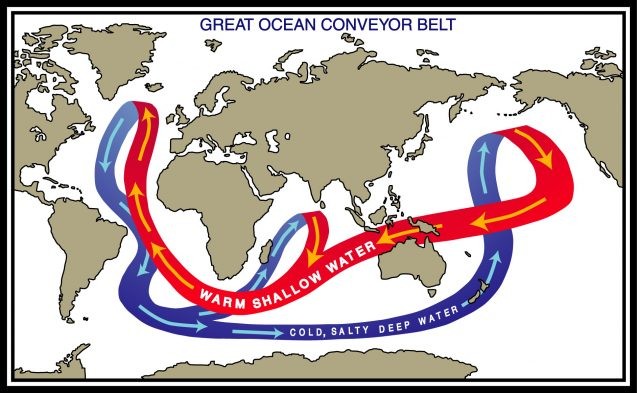
Starting in 1960, Broecker sailed on many of the world’s oceans and seas. In addition to sampling water, he maintained instruments, helped winch seafloor sediment cores to the surface, and threw dynamite overboard to produce explosions whose echoes were read to chart the bottom. In the 1970s, he co-led a global program funded by the U.S. government to use a wide variety of trace metals, nutrients and isotopes of radioactive elements to map the circulation of the deep ocean, the exchange of gases with the atmosphere, and other marine processes. This collective work provided the underpinnings for virtually all later studies of marine chemistry, and the oceans’ relationship to climate. It was Broecker who provided a running commentary for a documentary film on the project while on a cruise from Tahiti to San Diego. He used related geochemical methods to study lake waters, sediments and rocks in Canada and the American West for clues about climates of the past, with a special interest in the comings and goings of ice ages.
Early on, Broecker became interested in how the oceans absorb carbon dioxide from the air, and what effects this might have on climate. The history and behavior of atmospheric carbon dioxide were poorly known when he started out, but by the early 1970s, other researchers had analyzed ice cores from the Greenland ice and shown that they could track levels of atmospheric CO2 through the distant past. Work by others suggested that higher CO2 levels could be correlated with periods of warming. And scientists had speculated since the 19th century that rising output of human-produced CO2 could potentially warm the planet; some of Broecker’s contemporaries, including Charles Keeling of the Scripps Institution of Oceanography, were already tracking CO2 levels in real time and considering the effects.
In August 1975, Broecker synthesized his and others’ related research in the journal Science in a piece called “Climatic Change: Are We on the Brink of a Pronounced Global Warming?” It was later said to be the first time the phrase was used in a scientific paper. In it, he argued that humans were changing the climate by emitting CO2; it just wasn’t evident yet, because the world was experiencing what he believed was a natural 40-year cooling cycle that was masking the effects. He predicted that the cycle would soon reverse, and then the manmade warming on top of that would become dramatically visible. It later turned out that he had misinterpreted some of the ice-core data, but had the overall picture right. Right on cue in 1976, temperatures started ascending, and have continued since then pretty much along the trajectory Broecker laid out.
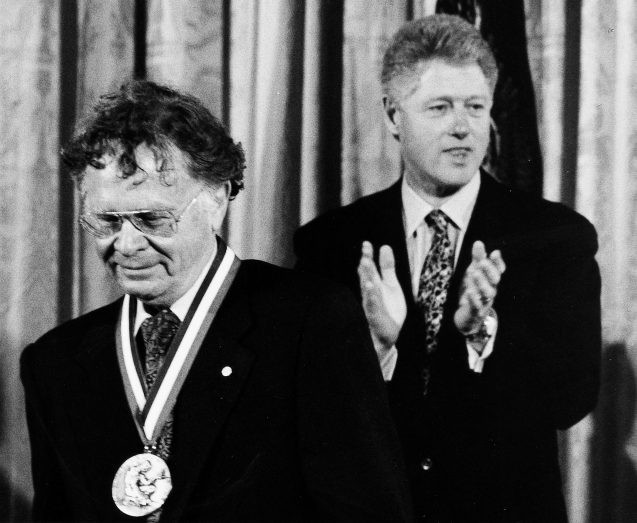
“Global warming” was quickly adopted by the science world, including in the first large-scale report on the subject, published in 1979 by the U.S. National Academy of Sciences. Decades later, when some credited Broecker with coining the phrase, he shrugged it off as “dumb luck.” He warned that he would turn over in his grave if someone put “global warming” on his tombstone. He once offered $200 to any student who could find an earlier citation for the phrase. (One postgrad did find it in a 1958 editorial in the Hammond Times of Indiana. It apparently didn’t catch on at that time.)
Broecker and a handful of other scientists began briefing government leaders on climate change in the 1980s. He testified at the first congressional hearings dealing with the subject, led in 1984 by then Tennessee Representative Al Gore. Over succeeding years, as the science advanced, Gore and other politicians repeatedly met with and consulted Broecker to have him explain.
In the mid-1980s Broecker synthesized a grand picture of world ocean circulation, based on his and others’ studies. He dubbed it “The Great Ocean Conveyor.” In simplest terms, it is a vast river of warm, shallow water flowing from the south Pacific into the Indian Ocean, rounding Africa and then heading north through the Atlantic. Once it hits cold water from the Arctic, the water then cools and sinks near northern Europe. From there, it loops through the abyss back to the Pacific to warm, rise and begin the cycle again. The flow is so huge, Broecker asserted, that it must help regulate global climate by moving around vast amounts of heat from one place to another. This idea soon became general consensus.
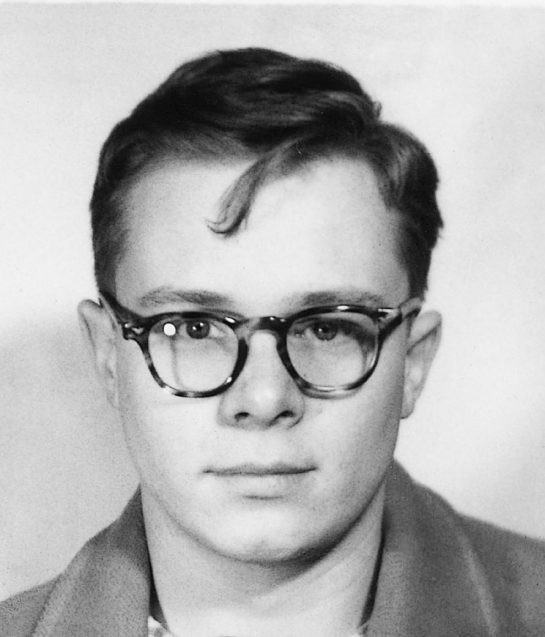
Broecker then put forth the idea that the conveyor could suddenly switch on and off, leading to drastic climate shifts–not over millennia, as many had come to think, but perhaps just decades. He pointed to an apparently rapid cooling some 12,000 years ago that threw Europe and other regions into a temporary deep freeze. Paradoxically, he argued, the cause might have been a then-warming climate and the collapse of northern ice sheets, which introduced a pulse of freshwater that pushed back on the conveyor. He warned that “the uncontrolled experiment” of modern human-induced warming might bring similar rapid changes. He was fond of saying, “The climate system is an angry beast, and we are poking it with sticks.”
Climatologists are still debating whether and how rapid climate swings might take place today. That notwithstanding, Broecker’s ideas were taken up and wildly exaggerated in the 2004 movie The Day After Tomorrow, which featured a climate-change-powered tsunami engulfing Manhattan and then freezing into an ice sheet–all in the same day. They were more credibly explained in possibly the only pop song about physical oceanography, “Uncle Wally’s Tale,” by the singer Tom Chapin. (Chapin was Broecker’s brother-in-law, married to Broecker’s younger sister, Bonnie.)
In the 1990s, Broecker served as chief scientific advisor for Biosphere 2, an experimental glassed-in environment in the Arizona desert meant to mimic the workings of land, oceans and air on a small scale. Columbia had just taken over scientific management, and the business side was temporarily handed over to a consultant named Steve Bannon—later chief advisor to U.S. president Donald Trump, and potent enemy of U.S. efforts to fight climate change. “An intense guy. I actually kinda liked him,” Broecker told the New Republic in 2017. After the 2016 election, Broecker was alarmed that maybe Bannon had forgotten or did not understand the science, and tried contacting him to set him straight. He never heard back.
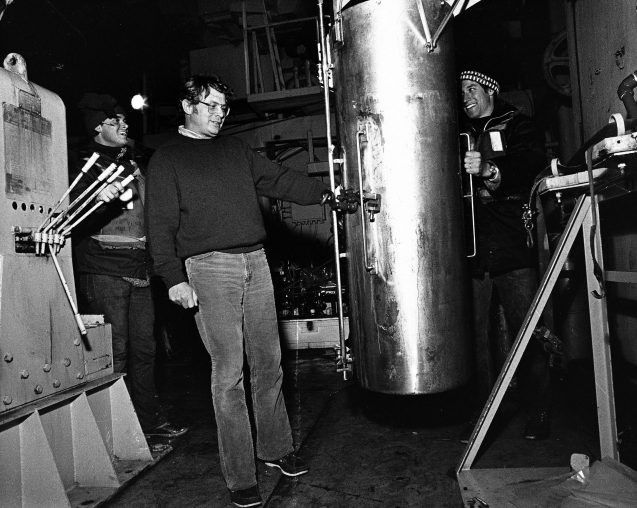
Broecker authored or coauthored close to 500 research papers, and at least 17 books. Many of the books were self-published spiral-bound affairs, passed out free to anyone interested. More commercial ones included the 2008 Fixing Climate (with science journalist Rob Kunzig), an autobiographical look at the development of modern climate science. He also collaborated with Harvard scientist Charles Langmuir on How to Build a Habitable Planet, a widely used text on Earth’s origin and evolution first published in 1984 and expanded in a 2012 edition. Broecker mentored about 50 Lamont grad students, many of whom went on to prominent careers.
There is no Nobel Prize in earth sciences, but Broecker received honors and millions of dollars in awards from foundations, governments and scientific societies. He received honorary degrees from Harvard, Cambridge and other universities. He was elected to London’s Royal Society and the U.S. National Academy of Sciences. In 1996, he received the National Medal of Science from U.S. President Bill Clinton. He plowed most of cash awards back into research.
In summer 2001, billionaire Gary Comer, founder of the Lands’ End clothing company, managed to sail his large yacht clear through Canada’s Northwest Passage —long impassable because of ice, but now suddenly open because of warming climate. Comer was intrigued by his own feat and sought out Broecker to learn more. The two became fast friends. Broecker, then entering his 70s, credited the businessman with “adopting” him and reviving his career at a time when he was considering retirement. Using Comer’s yacht and private aircraft, they carried out multiple expeditions to the far north together. Under Broecker’s influence, Comer gave some $25 million to fund climate researchers across the world, and to build a new geochemistry building at Lamont.
Broecker, who suffered from dyslexia, never got around to learning how to type or use a personal computer. He wrote with a pencil and notepad, and had staffers retype manuscripts and emails. He was known for his friendly demeanor, but also for his bluntness and volcanic temper; he publicly skewered grad students and senior scientists alike for sloppy work. “He has singlehandedly pushed more understanding than probably anybody in our field,” said Richard Alley, a leading climatologist at Pennsylvania State University. “He is intellectually so huge in how the earth system works and what its history is, that all of us are following Wally in one way or other.”
In recent years, Broecker increasingly spoke out about the dangers of climate change, but averred that much remained unknown. “It humbles you to study the earth system, because you realize nature is really complicated,” he told CBC television. He advocated for the eventual abandonment of fossil fuels, but saw little hope it would happen soon. “I don’t think we can destine the poor people on the planet to remain poor, just so we can not have CO2 build up in the atmosphere,” he said. “Coal is going to get burned and there is not anything we can do about it. [H]ow are you going to stop people from using it?”
As a stopgap, in his later years Broecker became an advocate of nascent technologies to suck CO2 from the air and store it back underground. Toward the end, though in failing health, he continued discussing the latest research, and pressed colleagues to consider the radical and highly controversial idea of engineering the planet itself to cut down warming, possibly by injecting vast amounts of sulfur dioxide into the upper atmosphere to repel solar energy. To this end, he helped organize a symposium at Arizona State University that brought together many of the world’s top climate scientists to debate the topic. The meeting was held on Feb. 11, 2019. By then too ill to attend, he addressed the participants via a livestream on a big-screen TV. “If we are going to prevent the planet from warming up another couple of degrees, we are going to have to go to geoengineering,” he told them. Otherwise, he said, there could be “many more surprises in the greenhouse.” He was using a wheelchair and breathing through an oxygen tube, but assured the attendees, “My mind is running pretty smoothly.” Almost exactly seven days later, he passed away.
Grace Carder, Broecker’s first wife, died in 2007; they had been married for 55 years. They had six children, five of whom survive him: Sandra Broecker of Dumont, N.J.; Cynthia Kennedy of Harrington Park, N.J.; Kathleen Wilson of Oxford, Miss.; Scott Broecker of Pacific Grove, Calif.; and Cheryl Keyes of Morristown, N.J. A daughter, Suzanne Broecker, died earlier. He is survived also by his daughter Milena Hoegsberg and son Tobias Hoegsberg of Copenhagen, from a separate relationship. In 2009, he married Elizabeth Clark, who had carried out work at his lab for many years, and who continued working with him; she survives him. He is also survived by his sisters Judith Redekop of Tucson, Ariz., and Bonnie Chapin of Piermont, N.Y. as well as seven grandchildren and seven great-grandchildren.
Broecker’s final extended work was CO2: Earth’s Climate Driver, an overview of the subject from deep time up to the present, published in fall 2018. Some time after that, he had an informal meeting with several longtime colleagues. He said that when he died, he wanted to be cremated, and asked a fellow Lamont marine scientist, geochemist Sidney Hemming, to take his ashes with her on her next research cruise. Scatter them in the ocean, he told her.
OTHER OBITUARIES FOR WALLACE BROECKER:
Scientist Who Popularized ‘Global Warming’ Dies at 87 – Associated Press
Wallace Broecker; Sounded Early Alarm on Climate Change – New York Times
Wallace Broecker, Who Helped Popularize the Term ‘Global Warming’ – Washington Post
Global Warming Pioneer Wallace Broecker, the ‘Grandfather of Climate Science’ – Newsweek
‘Grandfather of Climate Science’ Wallace Broecker Dies at 87 – NPR
